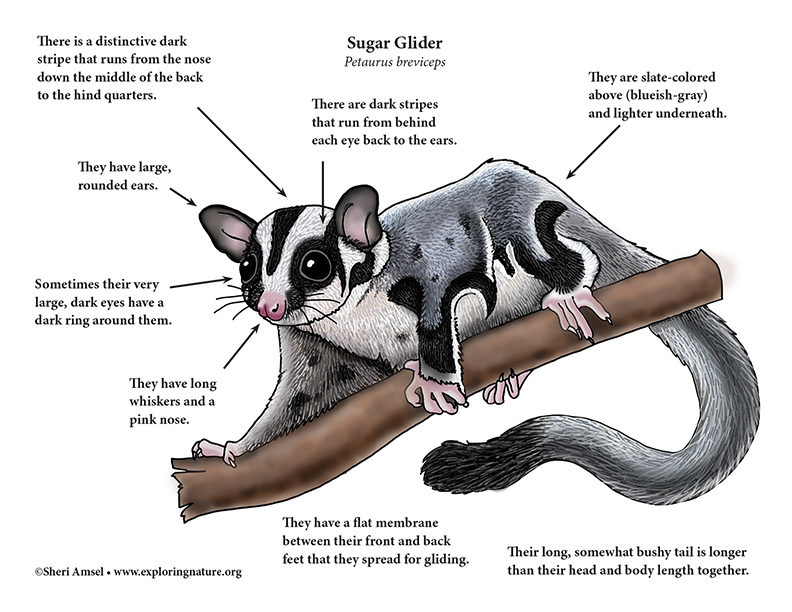Sugar gliders have two ears which are independent, meaning that they can move in different directions at the same time. Sugar gliders ears are mostly hairless, large compared to most of the head, and are thin. Sugar Gliders have two large eyes on either side of their head allowing them to have night vision. Sugar Gliders are "diprodonts" – meaning that they have two upper front teeth and two much longer lower incisors that point forward. Sugar gliders also have an extremely long tongue. Sugar gliders don't have feet instead they have 4 hands. The tail is approximately half their body length – usually about 6 inches fully-grown - and is used primarily as a steering mechanism to guide them while gliding through the air. the patagium, or gliding membrane of the Sugar Glider, is a flexible, but thin flap of furry skin that stretches from their wrists to their ankles.

A main part of a Sugar Glider is the patagium or the gliding membrane is a thin membrane that goes from their forelimb to the ankle of the hindlimb, allowing this organism to glide rather than to fly from tree to tree to access their food sources.
Sugar gliders have extremely long pink tongues o lap nectar and help chew food. Sugar gliders push their food onto their teeth to push out the nectar. Their tongues help him get food, and is extremely necessary for their survival.
The patagium was developed for a easier method to getting to its food source, as well avoiding predators. Because using the patagium a sugar glider can glide from different places allowing them extreme mobility.
